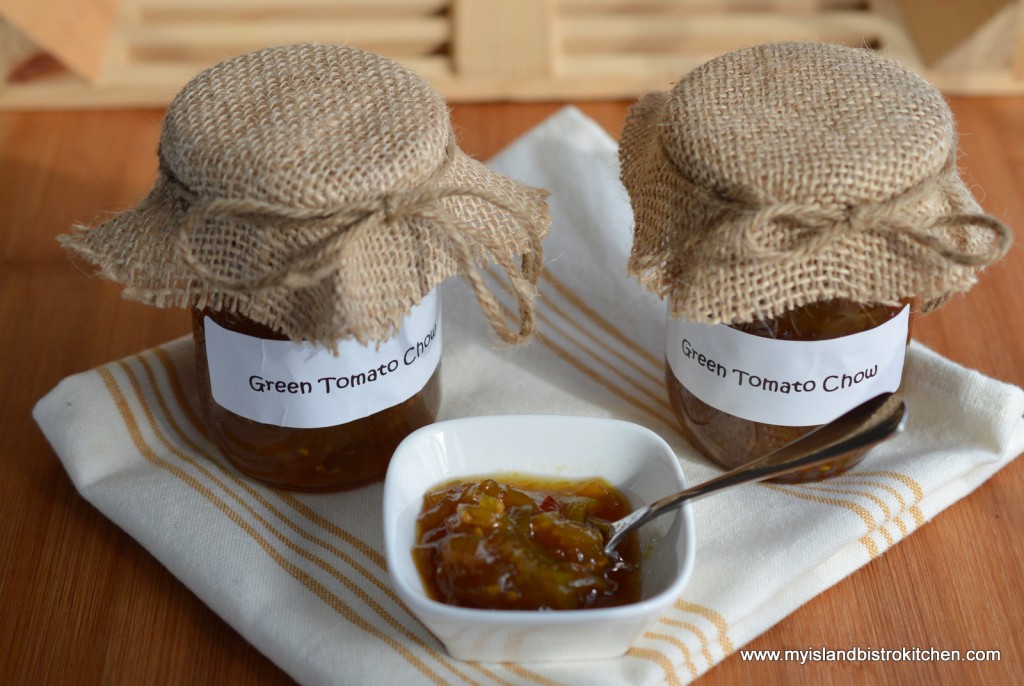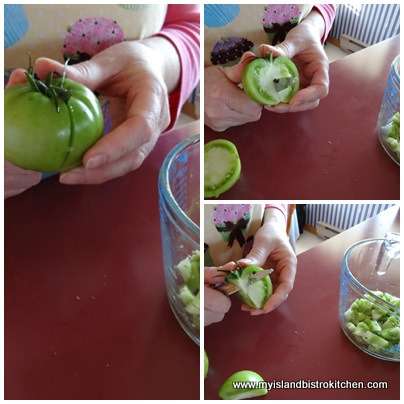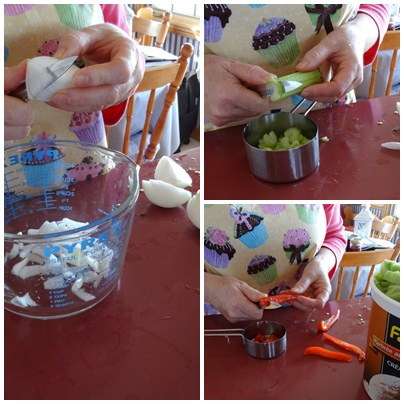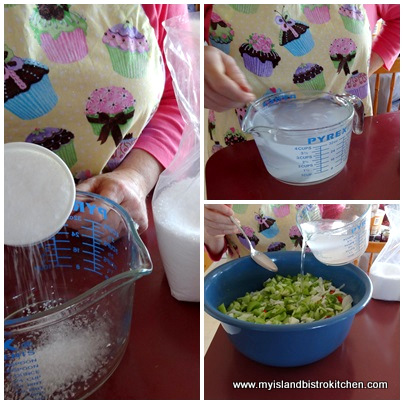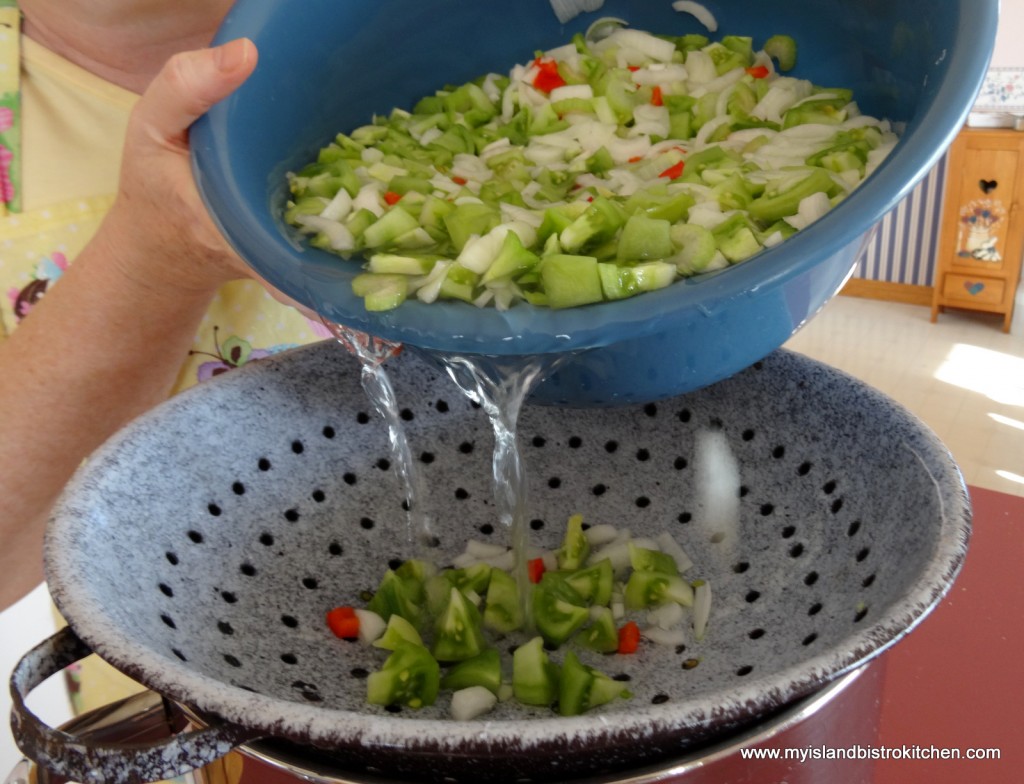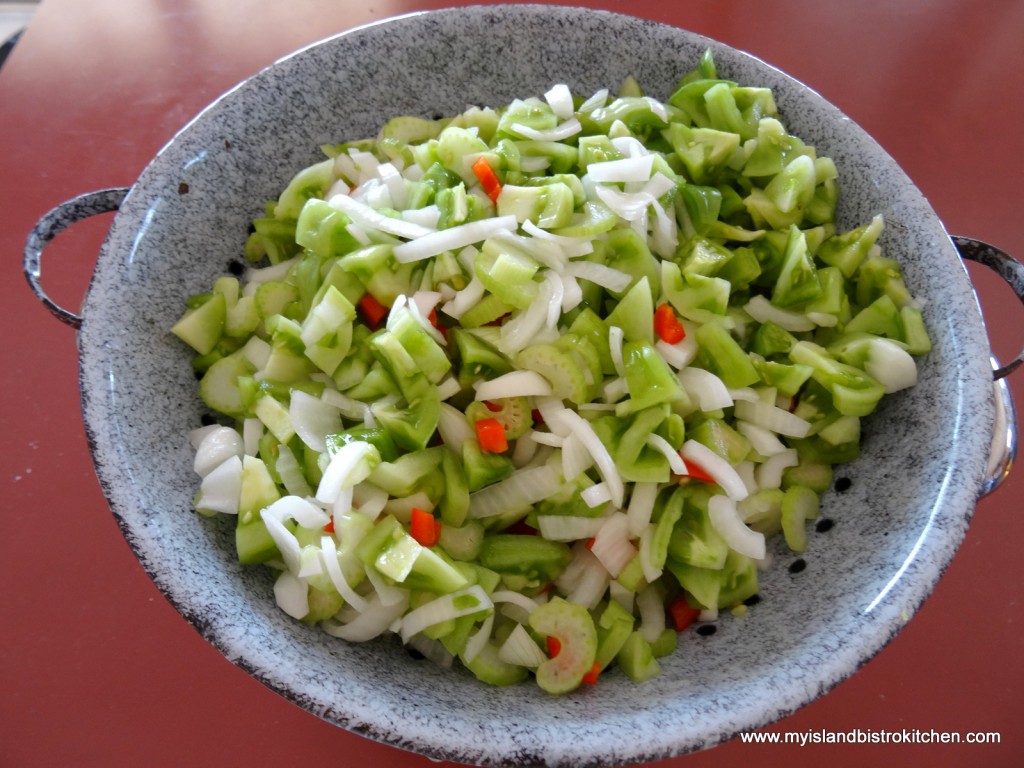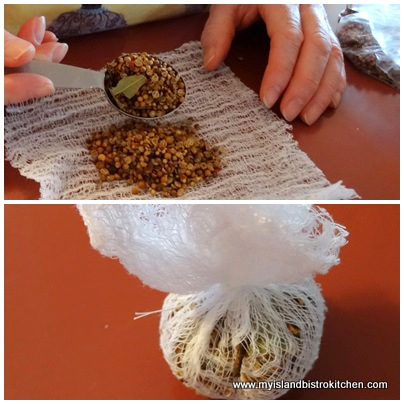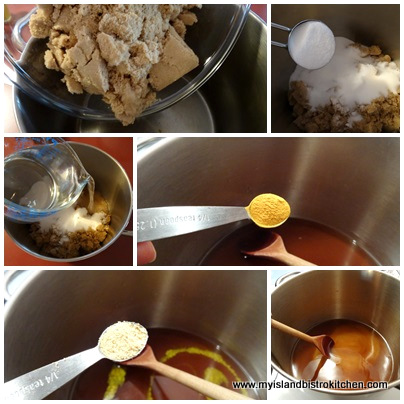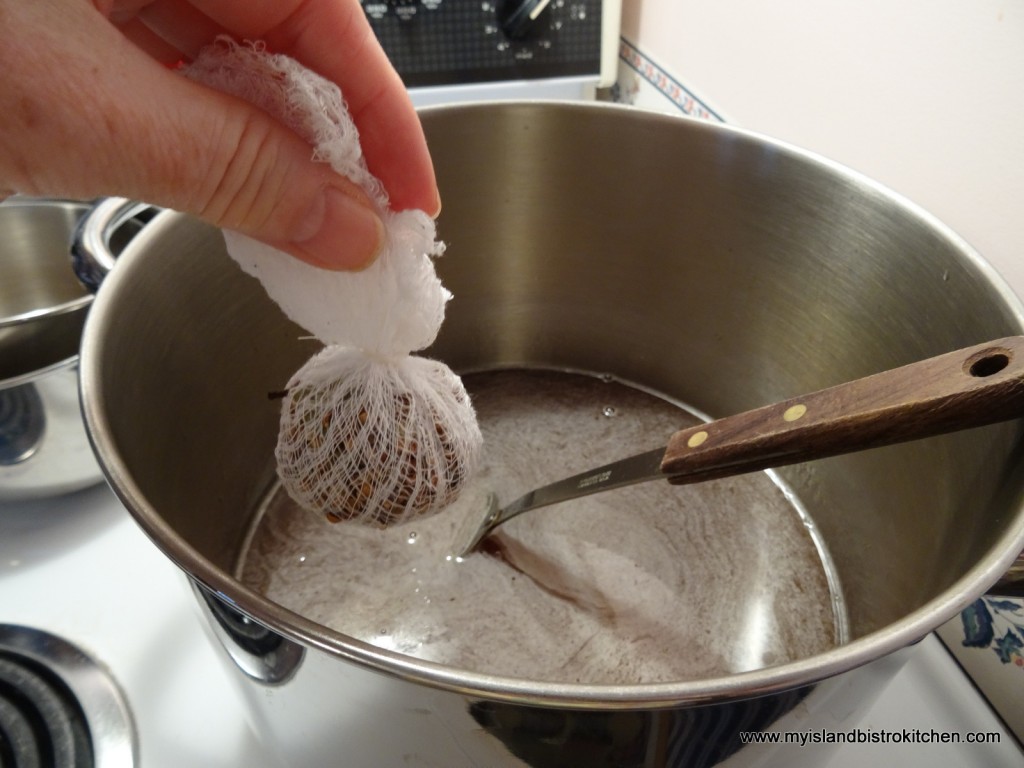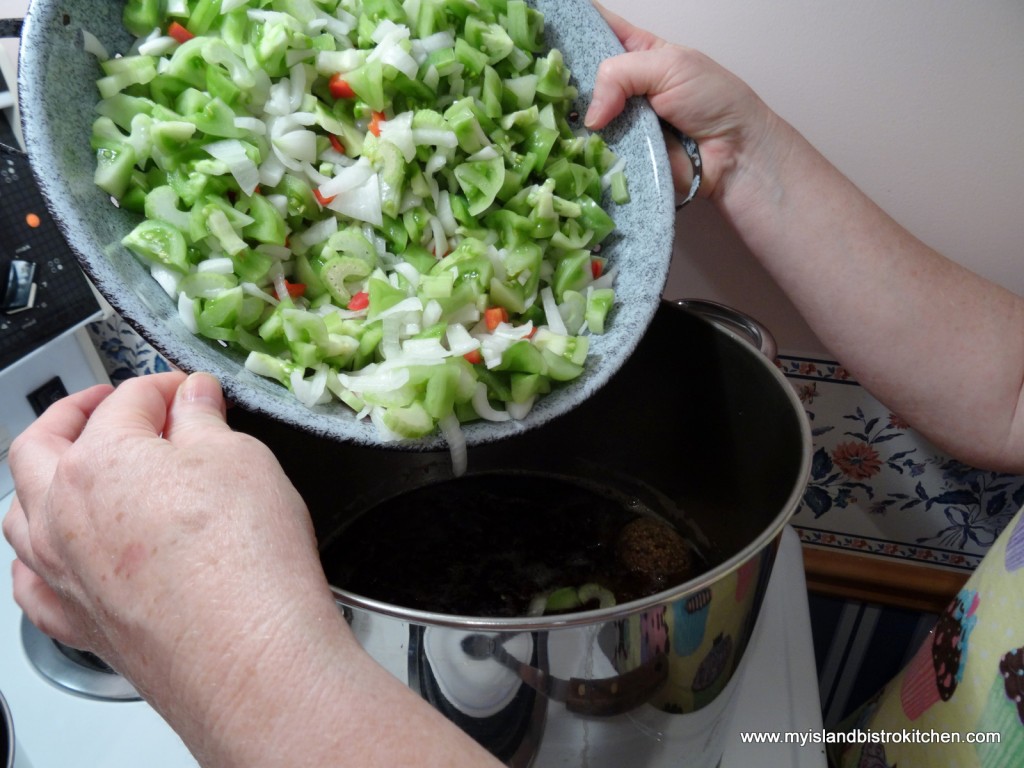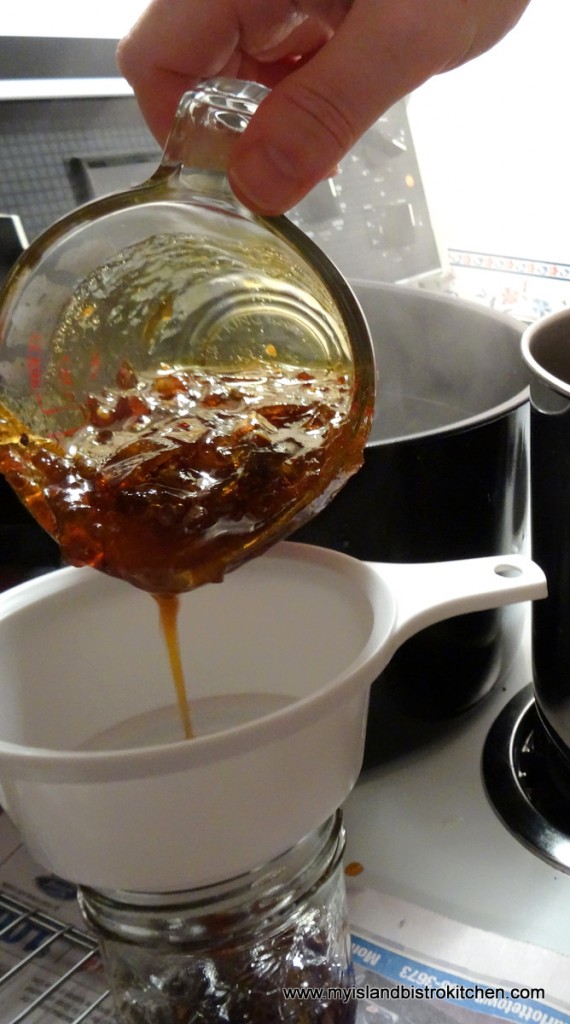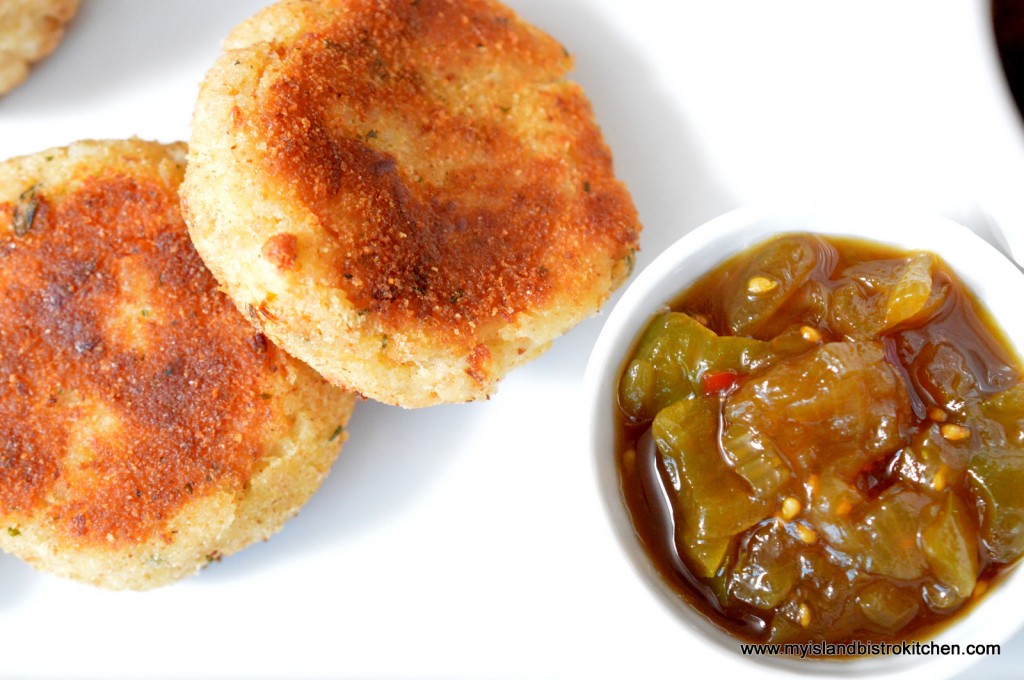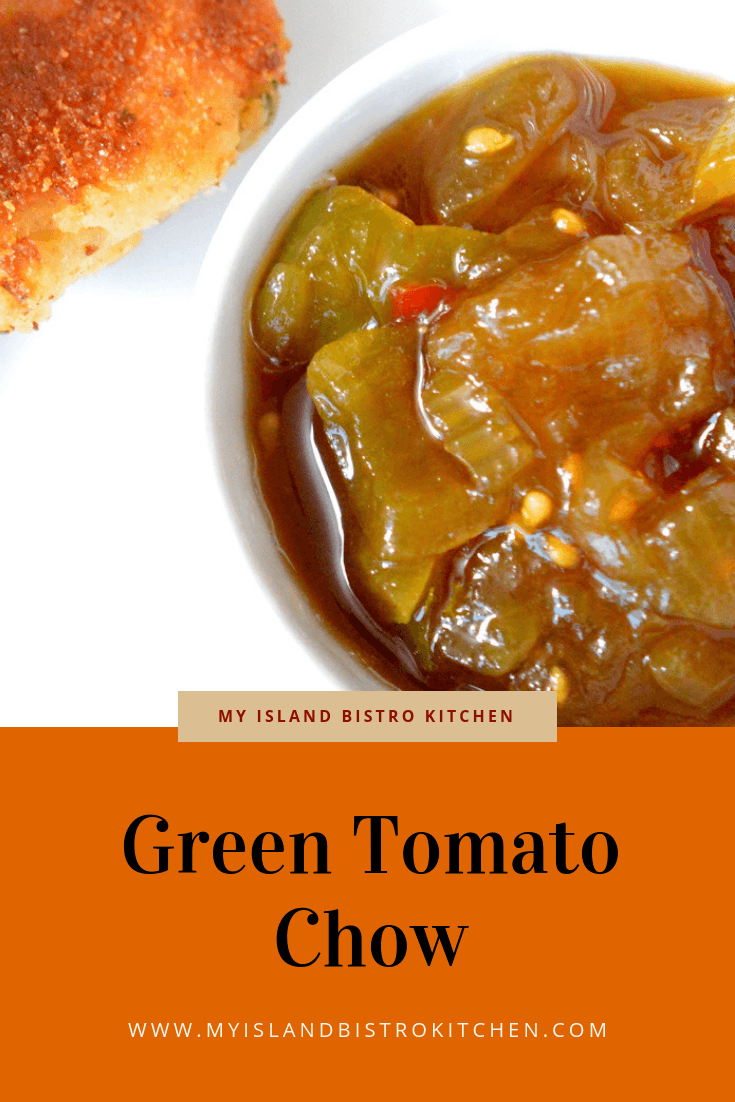Do you have an abundance of green tomatoes you’re wondering what to do with? Today, I am sharing my recipe for Green Tomato Chow (printable recipe follows at end of posting), a tasty condiment that makes good use of green tomatoes.
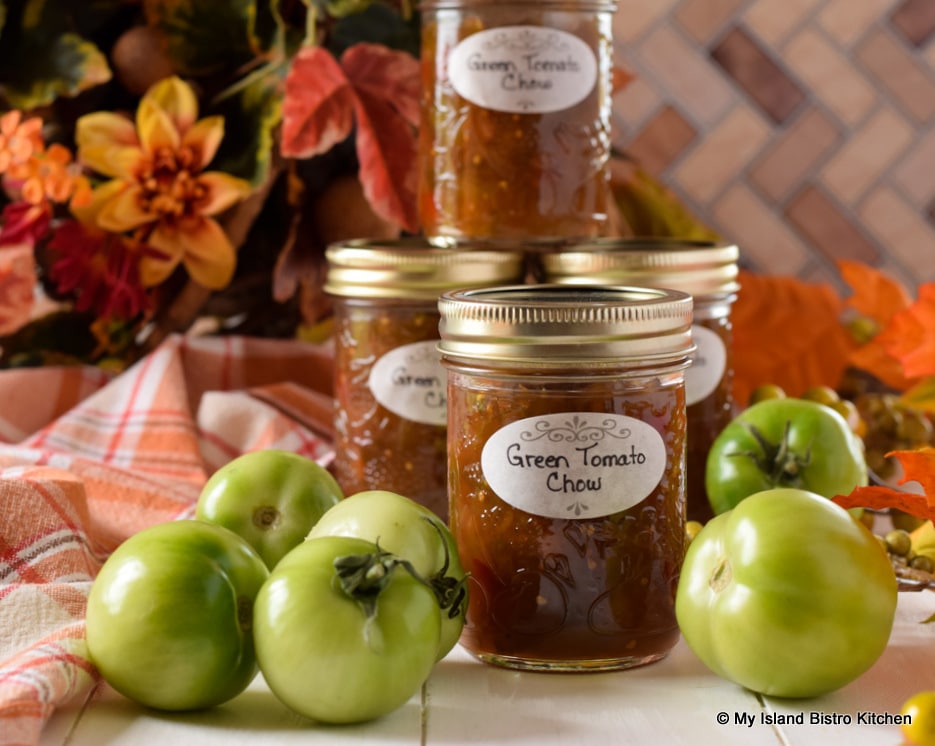 Green Tomato Chow is a great condiment to serve with cold meats, baked beans, stews, casseroles, chicken and meat pies, hot chicken/beef/turkey dinners and, of course, if you are a Maritimer, with fish cakes.
Green Tomato Chow is a great condiment to serve with cold meats, baked beans, stews, casseroles, chicken and meat pies, hot chicken/beef/turkey dinners and, of course, if you are a Maritimer, with fish cakes.
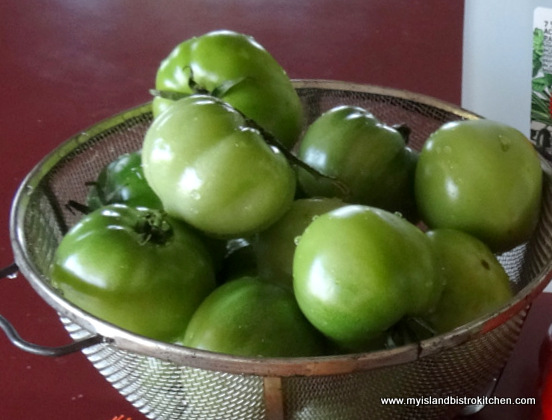
Chow making, like pickling, is a process and takes time. Make sure you read through the recipe and this post several times before making the recipe to ensure understanding of the process, sequencing involved, and that you have all the equipment and supplies needed.
Chow is not difficult to make but, like any pickling and preserving, it can be a bit time-consuming since the vegetables have to be cut up and soaked for several hours (either all day or all night), then slowly cooked then bottled and processed in a hot water canner. Making chow is not something that can be rushed so, if you plan to make this recipe, be sure to set aside sufficient time to do it properly.
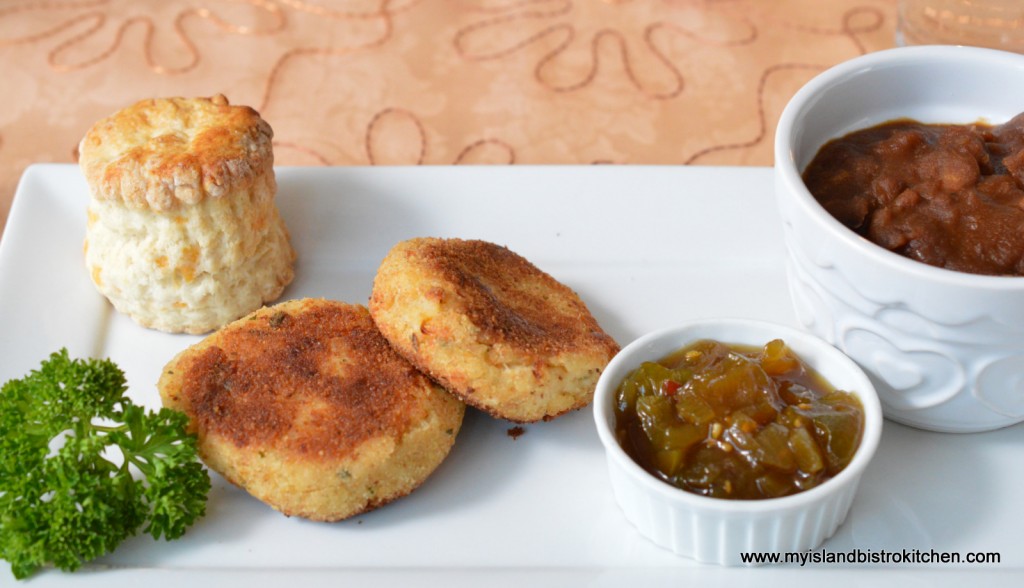
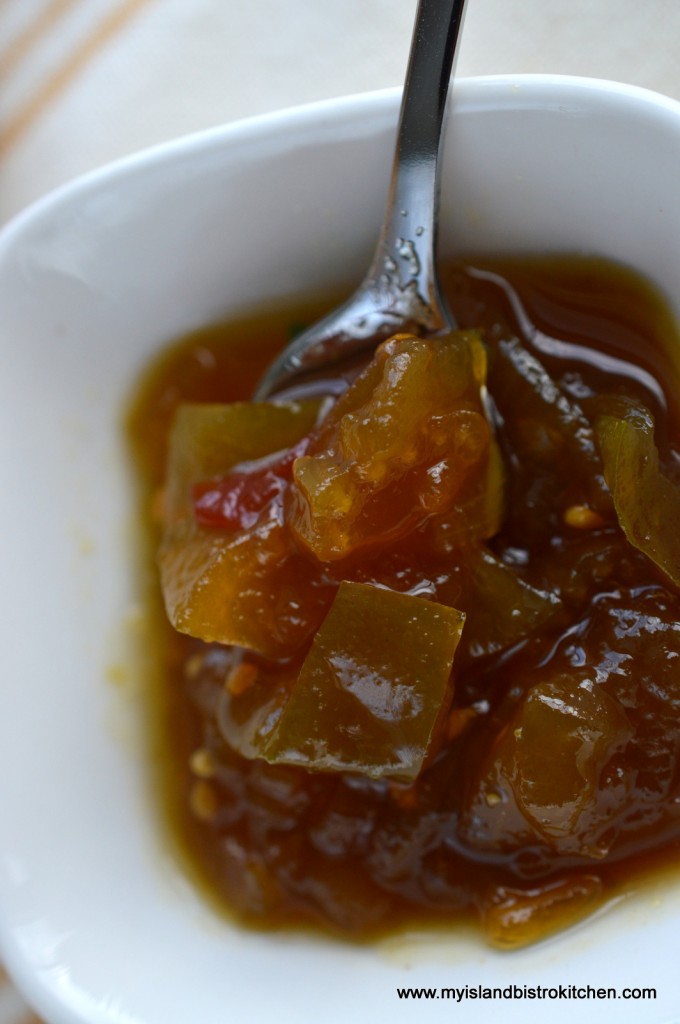
Assemble Ingredients and Equipment
The first thing you need to do is gather up all the ingredients and equipment you will need. Chow is basically nothing more than green tomatoes, onions, celery, red pepper, vinegar, sugar, and spices along with some pickling salt. No out of the ordinary ingredients. A list of equipment and utensils needed to make the chow can be found further down in this post.
Use Pickling Vinegar with 7% Acidity
Pickling vinegar with 7% acidity is recommended for this recipe. It can be found on grocery store shelves in the same section as regular white vinegar can be found. Pickling vinegar is a stronger vinegar that will help to preserve the chow longer. 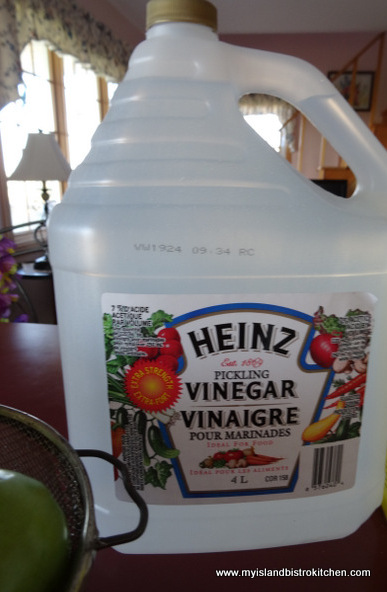
The Vegetables
Any kind of green tomatoes will make good chow. The ones I’ve used are just the basic garden variety of tomatoes. It’s usually a case of whatever green tomatoes are available in the garden! That said, Roma/plum or San Marzano tomatoes are quite suitable as they have more flesh and fewer seeds than do most garden variety tomatoes.
Some cooks cut the tomatoes crosswise into slices. I cut mine into smallish chunks. Either works. You don’t, however, want to chop the tomatoes up too finely as it will start to resemble more of a relish than a chow.
Cut up the onions. If you have the silver-skinned pickling onions, use them but, if not, regular yellow onions can be used in this recipe. Cut the onions into chunks about the same size as the tomatoes so they will all cook evenly.
Dice or slice the celery and dice the red pepper. Place all the vegetables into a large bowl.
Pickling Salt, Making the Soaking Salt Brine, and Soaking the Vegetables
The vegetables need to be soaked for 7-8 hours in a salt brine before being cooked. Soaking the tomatoes, in particular, in a slow-dissolving salt/water brine draws the natural water out of them, opens their cells, and allows the sauce to penetrate them. This gives the chow greater flavor, deep color, and a longer shelf life.
For both taste and preserving the chow over the winter, it is very important that proper pickling salt be used in the brine that is used to soak the cut-up tomatoes, onions, celery, and red pepper. This is a coarse, slow dissolving salt, specifically made for pickling and it will be so marked on the label. NEVER use fine iodized table salt in pickles or chow. It will make the pickles or chow taste too salty because the vegetables absorb too much of the salt and discoloration of the pickles/chow is likely.
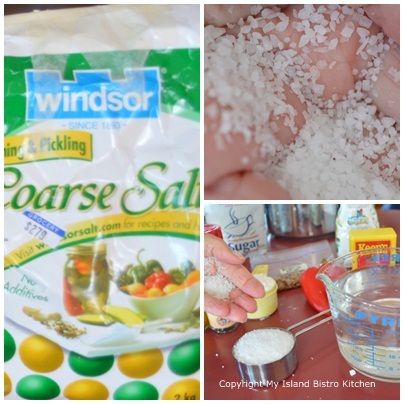
Coarse pickling salt is typically found in the same grocery aisle as regular table salt or at your bulk food store where it may be labeled as either “pickling salt” or “coarse salt” suitable for pickling.
It is important to ensure that the salt is completely dissolved in water before pouring it over the vegetables. In fact, I usually start this process before I cut up the vegetables as it takes a bit of time and stirring to get the salt completely dissolved. You can dissolve the salt in warm or hot water and refrigerate the brine until it is very cold, if you wish. Do not pour hot or warm brine over the vegetables called for in this recipe.
You will need enough salted cold water (the brine) to completely cover the vegetables to soak. I use a ratio of 1/2 cup pickling salt to 4 cups of water. For this particular recipe, I generally use 1 cup pickling salt dissolved in 8 cups of water.
Pour the cold salt brine over the vegetables, cover with a tea towel, and set the mixture aside to soak for 7 – 8 hours.
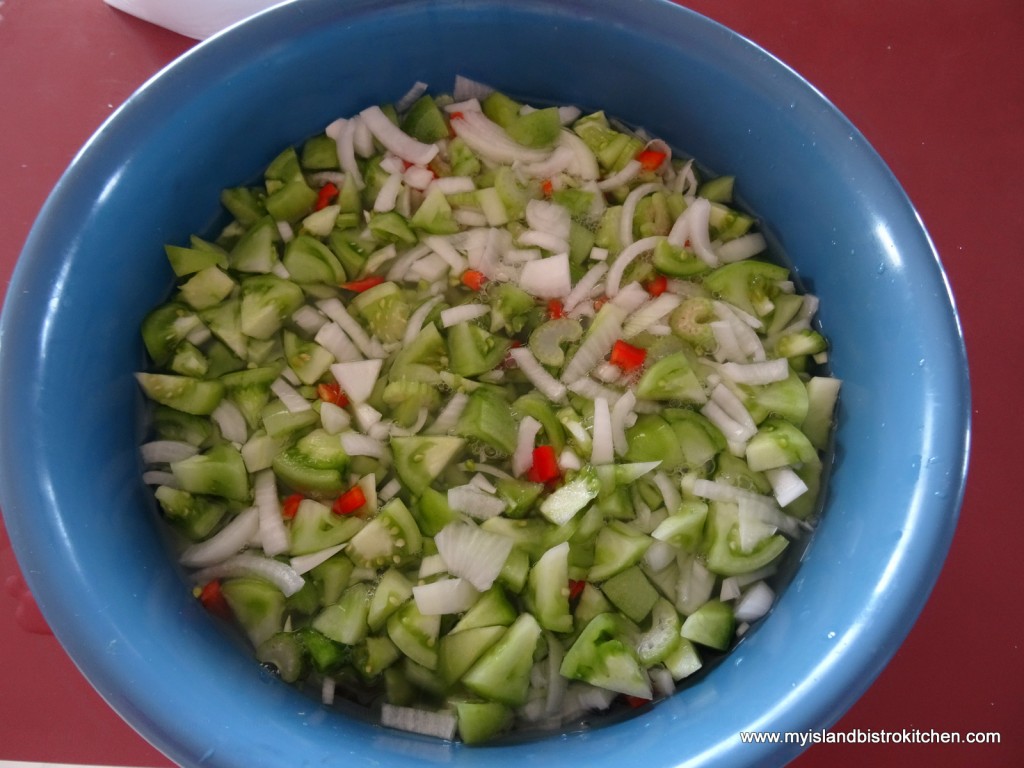 After the soaking period has ended, drain the vegetables into a large colander, or two if you have them.
After the soaking period has ended, drain the vegetables into a large colander, or two if you have them.
Under cold running water, quickly rinse the vegetables to remove any salt residue. Swish the vegetables around to ensure that all are rinsed off.
You’ll want to get as much water drained out of the vegetables as possible so let them sit in the colander for an hour or so or even a wee bit longer. You may want to carefully stir the vegetables around in the colander periodically during this period to ensure better drainage.
Making the Spice Sachet
I buy a pickling spice mix at my local bulk foods store. Some supermarkets may carry it in the spice aisle. If you can’t find a product labelled “pickling spice” in your area, you can always make your own. In my mustard pickle posting I give an explanation of spices typically included in a pickling spice mix.
The whole spices in the pickling spice mixture need to be corralled in a sachet as, well, it’s not a very pleasant experience to unexpectedly bite into a whole clove in the chow, for example! This sachet will get dropped into the stockpot and infuse flavor into the chow base as the chow cooks.
The sachet is made with cheesecloth, cut about a 6″ square. Cheesecloth comes in different weights and weaves so, if you have a tight woven cheesecloth, only one or two thicknesses of it may be required to enclose the spices. The cheesecloth in the photo below has a very open weave and is what is commonly available in stores in my area so I use 3-4 layers of it to contain the whole spices.
Place the spice mix in the middle of the 6″ square of cheesecloth then gather up the ends to form a little sachet. Tie the ends with kitchen string or heavy duty thread.
Cooking the Chow
Place the sugars, spices, and 3½ cups of the vinegar into a large stockpot. Stir well.
Drop in the spice sachet and bring mixture to a boil over medium heat.
Add the drained vegetables and return mixture to a boil, then immediately reduce heat to medium-low.
Cook chow slowly for approximately 1 hour until vegetables are cooked and somewhat translucent. The mixture will boil down as it cooks. Stir mixture occasionally to make sure it is not sticking to the bottom of the pot, adjusting heat if and as necessary.
Then, whisk 3 tablespoons of cornstarch with the reserved ½ cup pickling vinegar in small bowl until smooth. Add a couple of tablespoons of the hot chow liquid to the cornstarch and vinegar and whisk until smooth. Slowly stir mixture into the chow and cook over low heat until chow is slightly thickened.
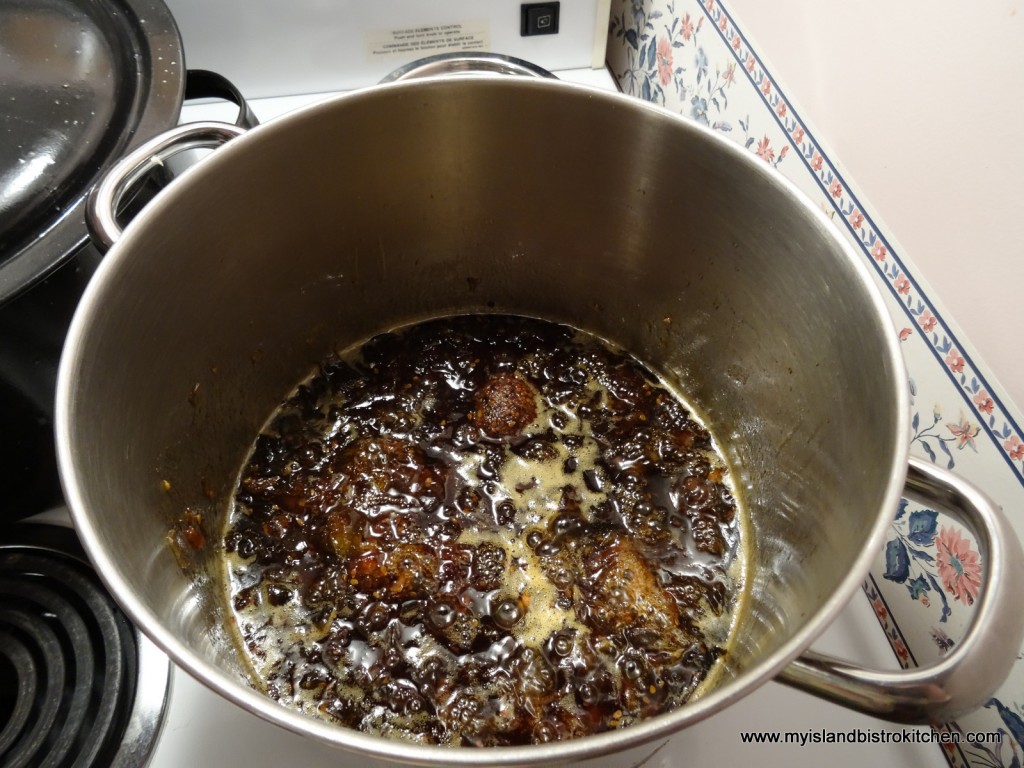 Jar Selection and Sterilization
Jar Selection and Sterilization
While the chow is slowly cooking, start the bottle sterilization process.
Use Only Proper Canning Jars
Ensure that proper canning jars, approved for hot water processing, are used for the chow. These are bottles such as Mason or Ball brand jars that are made of specially tempered glass capable of withstanding heat that will be necessary in the hot water canner for safe home canning of products. The glass jars have a wide mouth top and consist of a two-part lid and screw band.
While our ancestors of previous generations may have used just any old bottles they had at their disposal, using recycled bottles from store-bought products like pasta sauce or bought pickles, for example, is not recommended for food safe home canning. First, these jars, having already been sealed by the manufacturer and the seals having been broken by the consumer to reveal the jar contents, no longer have proper sealing covers considered safe for home canning of products. Second, the bottles are generally made of glass not as thick as proper canning jars and, therefore, are not considered to be resistant to heat extremes. This means they could shatter or explode when placed in the hot water canner.
With the potential for so many air- and food-borne illnesses to occur today and with the changing conditions in which our foods are grown (or modified), along with the fact that most homes today do not have dedicated temperature-controlled cold rooms (or cold cellars like many of our ancestors had) in which to store home canned goods, it is all the more reason why both the proper canning jars and home canning procedures are essential components to safe pickle and chow making. Do not skip the proper hot water canning process.
Sterilizing the Jars
Some use the sanitizing cycle on their dishwashers to sterilize the jars. I use the traditional method of sterilizing the jars in hot water as I can better control the timing of having the hot jars ready at the express moment the chow is ready for bottling. The jars must be hot when they are filled with the chow as they will be immediately going into the hot water canner of boiling water and cold jars are likely to crack.
Approximately seven (7) half pint sized glass canning jars will be required for this recipe. Begin by inspecting each jar before using it to ensure there are no chips or cracks.
While the chow is cooking, wash the jars in hot soapy water. Rinse well. Place a wire rack into a large-sized pot, capable of holding at least 7-10 pint jars upright, and fill pot about two-thirds full of hot tap water. Use two large pots for this process, if necessary. Do not stack jars, one on top of another. Place the jars, upright and in single layer, into the water. Ensure the jars are fully submerged, each jar filled with water, and that the water is at least an inch over the tops of the jars, adding more if necessary. Cover, bring to a boil, and boil gently for 10 minutes. Turn off heat and leave the jars in the hot water to have ready to fill once the chow is ready.
Because so many factors can determine exactly how many jars will be needed to accommodate the chow, I recommend having at least two to three extra jars sanitized in case they are needed. Even if they aren’t needed to be filled with chow, the hot empty jars may be needed to fill up space in the hot water canner if it is not completely filled to capacity with jars containing the chow. This is to ensure that the filled jars do not topple over during the hot water processing.  Bottling the Chow
Bottling the Chow
Once the chow is cooked and thickened, remove it from the heat. Remove and discard the pickling spice sachet.
To protect your countertop from the hot wet bottles and chow drippings, use a heatproof cutting board covered with newspaper to protect the board. Set a wire rack on top of the board.
Use a jar lifter to remove the hot sanitized jars from the water and carefully empty out the hot water back into the stock pot. Drain jars well and transfer them to the wire rack on the heatproof board. Do be very careful as this is scalding hot water.
Use a glass measuring cup or ladle to scoop up the chow and transfer it into the hot sterilized jars. A wide-mouthed funnel is useful for this process. Fill the jars, leaving about 1/2″ headroom in each.
Remove any air bubbles that may appear in the jars by inserting a chopstick or small heat-proof spatula into each bottle and gently move the chow to remove any pockets of air that may have formed. Add more chow, if necessary, to bring the chow up to 1/2″ from jar rim.
Make sure the rims of the filled jars have been wiped with a damp clean cloth to remove any chow residue. Even a small drop of it may prevent the lids from sealing properly and keeping out harmful bacteria that could cause the chow to spoil or someone to become ill from consuming it.
The metal lids (i.e., the part that has the orange-rust colored gasket on it) for canning jars are only single use and are NEVER to be reused for canning food.
While, historically, the lids (with the orange-rust colored gasket on their underside) were preheated in simmering hot water for 1-2 minutes to soften the lid gasket before applying the lids to the hot jars, Bernardin® (the company that manufactures canning lids available in Canada) is now saying that preheating their particular brand of lids is no longer necessary to provide a proper seal as the sealing compound they use in their lid manufacturing performs better at room temperature. They recommend washing the lids in hot soapy water, rinsing them, and setting the lids aside until needed in the canning process.
Note this pertains specifically to the Bernardin® brand of lids. Other manufacturers’ lids may differ so, if you are using another brand of lids, do check the manufacturer’s instructions for their particular brand lids. Typically, if the lids need to be preheated, the method is simply to place the lids in a small pan of simmering hot water over low heat just long enough to heat the rubber piece. This doesn’t take longer than a minute or two at most. Do not boil the lids.
Always, always use new lids for each canning session. The lids are inexpensive so don’t risk re-using them. Once you finish a bottle of chow, turf the lid.
The screw bands, on the other hand, can be re-used so long as they don’t have any rust spots on them or any dents.
Center the lids on the jars so the sealing compound on the lid edges aligns with the jar rims. Fingertip tighten ring/screw bands on jars until resistance is encountered. Do not over-tighten.
Processing the Filled Jars in Hot Water Canner
Always properly process your chow using an approved safe method of canning. This Green Tomato Chow is processed in a hot water canner which is a deep pot fitted with a lid and containing a metal basket or rack to hold the filled jars.
Canners come in different sizes and depths to accommodate different sizes of jars. The canner must have the capacity to hold jars the size called for in a recipe and allow for boiling water to cover the jars by 1″ when they are placed in the canner basket inside the canner. Here in Canada, hot water canners are relatively inexpensive and can usually be found at stores like Walmart, hardware stores (e.g., Home Hardware and Canadian Tire) as well as some large supermarkets and other places.
About 30 to 45 minutes before chow is due to be cooked, fill the hot water canner about half full of hot tap water. Cover and bring to a boil over medium-high heat to have it ready for processing of the filled jars. Reduce heat to keep canner water hot. Note that, depending on the size and design of canner(s) used, and number of filled jars, two canners may be required to accommodate the number of jars in this recipe as all the filled chow jars must be hot water processed as soon as they are filled. They must not be allowed to cool before going into the hot water canner.
Using jar lifter tongs, carefully place filled jars upright and in a single layer in the wire basket or rack positioned in the canner, ensuring jars do not touch each other or fall over. If a canner is not completely full to capacity of filled jars, it may be necessary to add one or more hot empty jars, upright, to the basket to fill up space so the filled jars do not topple over during processing. Should this be necessary, let the empty jars fill with water from the canner as they are submerged. Ensure the water level is at least 1” above the tops of jars, adding more boiling water as necessary. When it gets to this stage in the process, I recommend having a kettle of boiled water available if it is needed to top up the canner water levels.
Cover the canner with its lid. Increase the heat to return the water to a full rolling boil then decrease the heat to just keep the water at a moderately rolling boil but not boiling over. Process the half pint jars in the hot water bath for 10 minutes, adjusting time as and if necessary for altitude. Start timing the processing from the point at which a full rolling boil is reached after jars have been added to the canner. At the end of the processing time, turn off heat and remove canner lid.
Let jars sit in the hot water for 5 minutes then, using jar lifter tongs, carefully remove the jars filled with chow, one at a time, and transfer them to a heat-proof cutting board, that has been covered with a towel to protect it, to cool completely. Listen for the “pop” or “ping” sound as the bottles seal over the next few minutes or hours. The lids of properly sealed jars will curve downward.
Check Processed Jars for Proper Sealing
Let jars rest, undisturbed and covered with a towel to keep light out, on counter for 24 hours. Then, test each jar for proper sealing by lightly pressing down on the center of each jar lid. If the lid is already pressed downward, and does not pop back up, it is properly sealed. Any jars that do not pass this test should be refrigerated and the chow used within a week or so.
Storing Chow
Store properly sealed chow bottles in cool, dark place and let rest for at least 2 weeks before opening to allow flavors to develop. Refrigerate chow once jar has been opened.

You will need the following equipment to make this chow:
Digital Scales for weighing tomatoes
7 half pint sized glass canning jars (plus 2-3 extra jars in case needed to fill hot water canner to capacity)
7 – two-piece lid and screw band sets (lids must be brand new and not previously used)
Cheesecloth for making spice sachet and kitchen string or heavy duty thread for tying sachet
Large measuring cup or bowl for mixing salt water brine
Large bowl for soaking vegetables in salt water brine
Large colander for draining vegetables
Large heavy-bottomed stock pot for cooking chow
Large pot(s), fitted with wire rack(s) for sterilizing jars
Water bath canner with basket or rack
Jar lifter tongs
Wide-mouthed canning funnel
Ladle or heat-proof glass measuring cup for scooping up chow for bottling
Chopstick or small heat-proof spatula for removing air pockets in filled jars
A timer
Green Tomato Chow
Ingredients:
3 lbs green tomatoes, washed and chopped into small chunks
3¼ cups onions, chopped into chunks about the same size as the tomatoes
1 cup celery, sliced or diced
½ cup sweet red pepper, diced
Apx. 1 cup coarse pickling salt + 8 cups cold water
4 cups pickling vinegar (reserve ½ cup)
3 cups brown sugar, lightly packed
1 cup granulated sugar
1½ – 2 tbsp pickling spice tied into a small pickling spice sachet made with cheesecloth
¼ tsp tumeric
¼ tsp dry mustard
3 tbsp cornstarch
Method:
Combine chopped tomatoes, onions, celery, and red pepper into a large bowl. Using the ratio of ½ cup pickling salt to 4 cups cold water, cover ingredients completely with salted water. Add as much salted water as necessary to cover the vegetables. For this amount of vegetables, at least 1 cup pickling salt dissolved in 8 cups water will likely be needed. Make sure the pickling salt is thoroughly dissolved in the water before pouring over vegetables and ensure the brine is cold before being added to the vegetables. [See Note below]
Let vegetables soak at room temperature for 7-8 hours. Drain vegetables in large colander. Quickly rinse vegetables with cold water to remove any traces of salted water residue on vegetables. Let vegetables drain in colander for approximately 1 hour or a little longer, gently stirring the vegetables periodically for better drainage.
Once vegetables have drained, combine 3½ cups of the vinegar, sugars, spice sachet, tumeric, and dry mustard into a large stockpot. Bring to a boil over medium heat, stirring occasionally. Add the drained vegetables and bring to a boil over medium heat. Reduce heat to medium-low (or a little lower) and cook mixture slowly for about 1 hour or so, until vegetables are cooked and somewhat translucent. Stir periodically to ensure mixture is not sticking to bottom of pot, adjusting temperature, if and as necessary.
As soon as the chow starts cooking, begin the bottle sterilization process. Wash jars in hot soapy water and rinse.
Fit a wire rack inside a large-sized stockpot and fill about two-thirds full of hot tap water.Place the jars into the water on the rack, upright and in single layer. Use more than one stockpot if necessary to accommodate all jars needed for the recipe. Do not stack jars on top of each other in stockpot. Ensure the jars are fully submerged, each jar filled with water, and that the water is at least an inch over the tops of the jars, adding more if necessary. Cover, bring to a boil over medium-high heat, then reduce heat slightly and boil gently for 10 minutes. Turn off heat and leave the jars in the hot water to have ready to fill once the chow is ready.
After the chow has been cooking for 1 hour or so, combine the 3 tablespoons of cornstarch with the reserved ½ cup of vinegar in small bowl. Whisk until smooth then add a couple of tablespoons of the hot chow liquid and whisk until smooth. Slowly pour the mixture into the chow over low to medium-low heat, stirring constantly until well blended. Cook chow for a further 15 minutes or so until slightly thickened, stirring frequently.
About 30-45 minutes before chow is due to be cooked, fill the hot water canner about half full of hot tap water. Cover and bring to a boil over medium-high heat to have it ready for processing of the filled jars. Reduce heat to keep canner water hot. Note that, depending on the size and design of canner(s) used, and number of filled jars, two canners may be required to accommodate the number of jars in this recipe as all the filled chow jars must be hot water processed as soon as they are filled. They must not be allowed to cool before going into the hot water canner.
When the chow is cooked and ready to be bottled, use jar lifter tongs to carefully remove the hot sterilized jars from the water, one at a time, emptying the water from the jars back into the pot. Drain jars well. Do be very careful as this is scalding hot water.
Boil a kettle of water to have ready, if needed, to top up water levels in the canner once the filled jars are added.
Remove and discard spice sachet from chow. Using a ladle, or a heat-proof glass measuring cup, and a wide-mouthed canning funnel, fill the hot sterilized jars with the chow, leaving about 1/2” headroom in each jar to allow for expansion during the hot water processing. Remove any trapped air bubbles in the jars with a chopstick or small heatproof spatula. Add more chow to jars, if necessary, to bring chow up to 1/2” from jar rims. Wipe the jar rims with a clean damp cloth to remove any stickiness that could prevent the lids from sealing properly to the jars.
Center the lids on jars so the sealing compound on the lid edges aligns with the jar rims. Fingertip tighten the ring/screw bands until resistance is encountered. Do not over-tighten.
Using jar lifter tongs, carefully place filled jars upright, single layer, in the canner’s wire basket positioned in the canner, ensuring jars do not touch each other or fall over. Ensure the water level is at least 1” above the tops of jars, adding more boiling water as necessary. If a canner is not completely full of filled jars, add enough hot empty jars to fill it to capacity to prevent filled jars from toppling over during processing. Make sure the empty jars are already hot as cold jars immersed in boiling hot water are likely to crack.
Cover canner with its lid. Increase the heat to return the water to a full rolling boil then decrease the heat to just keep the water at a moderately rolling boil but not boiling over. Process half-pint sized jars in the hot water bath for 10 minutes, adjusting time as and if necessary, for higher altitudes. Start timing the processing from the point at which a full rolling boil is reached after filled jars have been added to the canner. At the end of the processing time, turn off heat and remove canner lid.
Let jars sit in the hot water for 5 minutes then, using jar lifter tongs, carefully remove the jars filled with chow, upright and one at a time, and transfer them to a heat-proof cutting board (that has been covered with a towel to protect it from the hot wet jars) to cool completely.
Listen for the “pop” or “ping” sound as the bottles seal over the next few minutes or hours. The lids of properly sealed jars will curve downward. Cover jars with towel to keep light out. Let jars rest, undisturbed, on counter for 24 hours. Then, after 24 hours, test each jar for proper sealing by gently pressing down on the center of each jar lid. If the lid is already pressed downward, and does not pop back up, it is properly sealed. Any jars that do not pass this test should be refrigerated and the chow used within a week or so.
Store properly sealed chow bottles in cool, dark place and allow to rest for at least 2 weeks to allow flavor to fully develop before opening. Use chow within one year of bottling. Refrigerate chow once jar has been opened.
Yield: Apx. 6 – 7 half-pint jars.
NOTE: Coarse pickling salt can be difficult to get fully dissolved in cold water. It may be mixed with warm or hot water and stirred well to dissolve it. Make sure, however, if warm or hot water was used to dissolve the salt that the salt brine has been refrigerated for several hours to ensure it is cold before pouring brine over vegetables.
If you have made this recipe and enjoyed it and/or wish to share it with your friends and family, please do so on social media but be sure to share the direct link to this posting from my website.
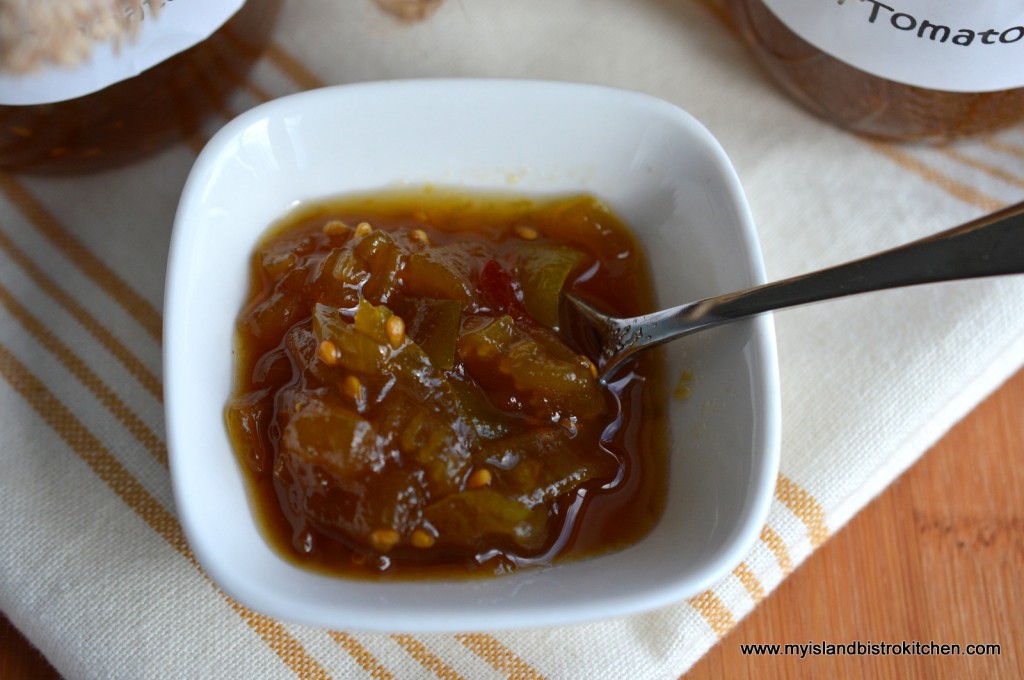
Did you Know?
You can join the Facebook page for My Island Bistro Kitchen: https://www.facebook.com/MyIslandBistroKitchen/
Follow “the Bistro” on “X” (formerly Twitter): https://twitter.com/PEIBistro/
See the drool-worthy gallery of mouth-watering food photos from My Island Bistro Kitchen on Instagram: https://www.instagram.com/peibistro/
Follow “the Bistro” on Pinterest at https://www.pinterest.ca/peibistro/
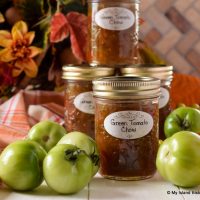
Green Tomato Chow
Ingredients
- 3 lbs green tomatoes, washed and chopped into small chunks
- 3¼ cups onions, chopped into chunks about the same size as the tomatoes
- 1 cup celery, sliced or diced
- ½ cup sweet red pepper, diced
- Apx. 1 cup coarse pickling salt + 8 cups cold water
- 4 cups pickling vinegar (reserve ½ cup)
- 3 cups brown sugar, lightly packed
- 1 cup granulated sugar
- 1½ - 2 tbsp pickling spice tied into a small pickling spice sachet made with cheesecloth
- ¼ tsp tumeric
- ¼ tsp dry mustard
- 3 tbsp cornstarch
Instructions
Combine chopped tomatoes, onions, celery, and red pepper into a large bowl. Using the ratio of ½ cup pickling salt to 4 cups cold water, cover ingredients completely with salted water. Add as much salted water as necessary to cover the vegetables. For this amount of vegetables, at least 1 cup pickling salt dissolved in 8 cups water will likely be needed. Make sure the pickling salt is thoroughly dissolved in the water before pouring over vegetables and ensure the brine is cold before being added to the vegetables. [See Note 1 below]
- Let vegetables soak at room temperature for 7-8 hours. Drain vegetables in large colander. Quickly rinse vegetables with cold water to remove any traces of salted water residue on vegetables. Let vegetables drain in colander for approximately 1 hour or a little longer, gently stirring the vegetables periodically for better drainage.
- Once vegetables have drained, combine 3½ cups of the vinegar, sugars, spice sachet, tumeric, and dry mustard into a large stockpot. Bring to a boil over medium heat, stirring occasionally. Add the drained vegetables and bring to a boil over medium heat. Reduce heat to medium-low (or a little lower) and cook mixture slowly for about 1 hour or so, until vegetables are cooked and somewhat translucent. Stir periodically to ensure mixture is not sticking to bottom of pot, adjusting temperature, if and as necessary.
As soon as the chow starts cooking, begin the bottle sterilization process. Wash jars and lids in hot soapy water and rinse.
Fill a large-sized stockpot, fitted with wire rack, about two-thirds full of hot tap water. Place the jars, upright and in single layer, into the water. Use more than one stockpot, if necessary, to accommodate all jars needed for the recipe. Do not stack jars on top of each other in stockpot. Ensure the jars are fully submerged, each jar filled with water, and that the water is at least an inch over the tops of the jars, adding more if necessary. Cover, bring to a boil over medium-high heat, then reduce heat slightly and boil gently for 10 minutes. Turn off heat and leave the jars in the hot water to have ready to fill once the chow is ready.
- After the chow has been cooking for 1 hour or so, combine the 3 tablespoons of cornstarch with the reserved ½ cup of vinegar in small bowl. Whisk until smooth then add a couple of tablespoons of the hot chow liquid and whisk until smooth. Slowly pour the mixture into the chow over low to medium-low heat, stirring constantly until well blended. Cook chow for a further 15 minutes or so until slightly thickened, stirring frequently.
- About 30-45 minutes before chow is due to be cooked, fill the hot water canner about half full of hot tap water. Cover and bring to a boil over medium-high heat to have it ready for processing of the filled jars. Reduce heat to keep canner water hot. Note that, depending on the size and design of canner(s) used, and number of filled jars, two canners may be required to accommodate the number of jars in this recipe as all the filled chow jars must be hot water processed as soon as they are filled. They must not be allowed to cool before going into the hot water canner.
- When the chow is cooked and ready to be bottled, use jar lifter tongs to carefully remove the hot sterilized jars from the water, one at a time, emptying the water from the jars back into the pot. Drain jars well. Do be very careful as this is scalding hot water.
- Boil a kettle of water to have ready, if needed, to top up water levels in the canner once the filled jars are added.
- Remove and discard spice sachet from chow. Using a ladle, or a heat-proof glass measuring cup, and a wide-mouthed canning funnel, fill the hot sterilized jars with the chow, leaving about 1/2” headroom in each jar to allow for expansion during the hot water processing. Remove any trapped air bubbles in the jars with a chopstick or small heatproof spatula. Add more chow to jars, if necessary, to bring chow up to 1/2” from jar rims. Wipe the jar rims with a clean damp cloth to remove any stickiness that could prevent the lids from sealing properly to the jars.
Center the lids on jars so the sealing compound on the lid edges aligns with the jar rims. Fingertip tighten the ring/screw bands until resistance is encountered. Do not over-tighten. (See Note 2 below regarding lid preparation)
- Using jar lifter tongs, carefully place filled jars upright, single layer, in the canner's wire basket positioned in the canner, ensuring jars do not touch each other or fall over. Ensure the water level is at least 1” above the tops of jars, adding more boiling water as necessary. If a canner is not completely full of filled jars, add enough hot empty jars to fill it to capacity to prevent filled jars from toppling over during processing. Make sure the empty jars are already hot as cold jars immersed in boiling hot water are likely to crack.
- Cover canner with its lid. Increase the heat to return the water to a full rolling boil then decrease the heat to just keep the water at a moderately rolling boil but not boiling over. Process half-pint sized jars in the hot water bath for 10 minutes, adjusting time as and if necessary, for higher altitudes. Start timing the processing from the point at which a full rolling boil is reached after filled jars have been added to the canner. At the end of the processing time, turn off heat and remove canner lid.
- Let jars sit in the hot water for 5 minutes then, using jar lifter tongs, carefully remove the jars filled with chow, upright and one at a time, and transfer them to a heat-proof cutting board (that has been covered with a towel to protect it from the hot wet jars) to cool completely.
- Listen for the “pop” or “ping” sound as the bottles seal over the next few minutes or hours. The lids of properly sealed jars will curve downward. Cover jars with towel to keep light out. Let jars rest, undisturbed, on counter for 24 hours. Then, after 24 hours, test each jar for proper sealing by gently pressing down on the center of each jar lid. If the lid is already pressed downward, and does not pop back up, it is properly sealed. Any jars that do not pass this test should be refrigerated and the chow used within a week or so.
Store properly sealed chow bottles in cool, dark place and allow to rest for at least 2 weeks to allow flavor to fully develop before opening. Use chow within one year of bottling. Refrigerate chow once jar has been opened.
Recipe Notes
NOTE 1: Coarse pickling salt can be difficult to get fully dissolved in cold water. It may be mixed with warm or hot water and stirred well to dissolve it. Make sure, however, if warm or hot water was used to dissolve the salt that the salt brine has been refrigerated for several hours to ensure it is cold before pouring brine over vegetables.
NOTE 2: While, historically, the lids (with the orange-rust colored gasket on their underside) were preheated in simmering hot water for 1-2 minutes to soften the lid gasket before applying the lids to the hot jars, Bernardin® (the company that manufactures canning lids available in Canada) is now saying that preheating their particular brand of lids is no longer necessary to provide a proper seal as the sealing compound they use in their lid manufacturing performs better at room temperature. They recommend washing the lids in hot soapy water, rinsing them, and setting the lids aside until needed in the canning process.
Note this pertains specifically to the Bernardin® brand of lids. Other manufacturers’ lids may differ so, if you are using another brand of lids, do check the manufacturer’s instructions for lid preparation of their particular brand lids. Typically, if the lids need to be preheated, the method is simply to place the lids in a small pan of simmering hot water over low heat just long enough to heat the rubber piece. This doesn't take longer than a minute or two at most. Do not boil the lids.
[Copyright My Island Bistro Kitchen]
For other great pickle and relish recipes from My Island Bistro Kitchen, click on the links below:
Mustard Pickles
Dill Pickles
Bread and Butter Pickles
Rhubarb Relish
Pickled Beets
Rhubarb and Mango Chutney
Mustard Beans
Pin Me To Pinterest!
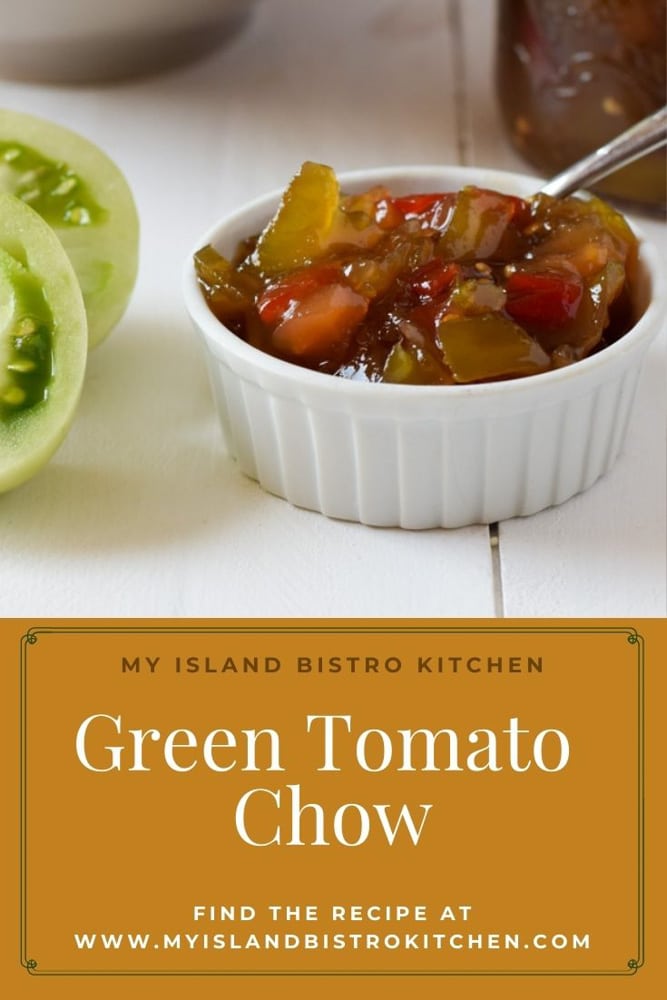
[This post and recipe were last updated on August 20, 2024]


